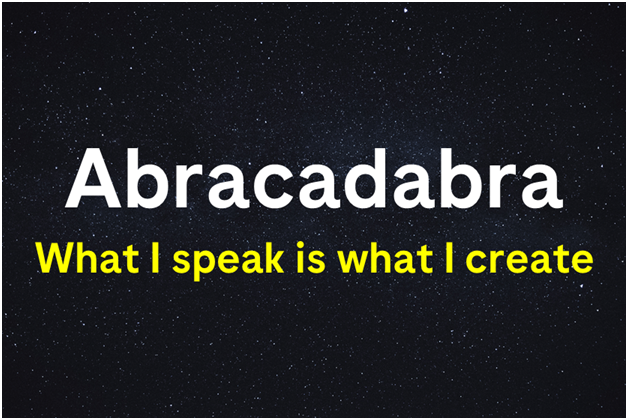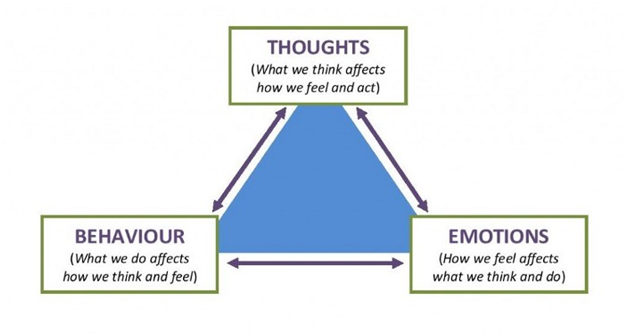A Coaching Power Tool By Ekaterina Breous, Life Coach, SWITZERLAND

Abracadabra – The Technique of Affirmations

We often doubt ourselves. After just giving a presentation I’m doing great, but after several hours and no one is giving me feedback, I’m thinking: “Maybe I’m not that good of a public speaker? Who am I fooling? I don’t think I can keep doing this.” We go through our days and entire lives with self-assessments of “I’m good” or “I’m bad” oscillating like emotional ping pong. While the former can give you wings, the latter can weigh you down, affect your sense of self-worth and hold you back from pursuing your goals and dreams. We know that yet we often get stuck in the negative self-judgment and struggle to come out of it.
What if we were to turn to magic for help? Magic is an ancient praxis rooted in rituals with the intention to invoke or manifest new possibilities. The most common ritual involves a magic word that is recited to make magic happen. Abracadabra is the most popular and widely known magic word in the world. Its origins are from the Aramaic phrase avra kehdabra, meaning “What I speak is what I create”. This spotlights the importance of our words and thoughts. Let’s take a look at why and how it may work.
The Power of Affirmations
Words are known to have a great effect on people. One of the biggest effects of the power of words is in medicine, specifically in the case of chronic diseases. Words in a doctor’s conversation with a patient can significantly change the patient’s view of the situation. For example, when a doctor told a patient that a drug given to the patient would cure his or her disease in three days, but the drug given to the patient was actually candy, it may still be possible for the patient to regain his or her health. It’s not the drug that heals the disease but the patient’s belief in the drug. This is called the “Placebo effect” in medicine. Of course, the other side of the coin here is the “Nocebo effect”. For instance, a patient who discovers that he is in the grips of an incurable disease may be unlikely to respond positively to treatments.
At the backbone of these effects is the belief that our words and thoughts affect our physical reality. The technique that is rooted in this is known as an affirmation. An affirmation is a statement that something is true. Countless people have testified to the power of affirmations in altering their lives in a positive way. However, it is only in the recent past has research in neuroscience and cognitive psychology provided the scientific explanation of the affirmation process. In her seminal studies examining the neural mechanisms of self-affirmation using magnetic resonance imaging, Dr. Emily Falk demonstrated new neuronal activity in participants who were affirmed (compared with unaffirmed participants). This is in line with earlier studies of Dr. Alvaro Pascual-Leone who showed the formation of neuronal networks as a result of imagining or visualizing a future task. In fact, an affirmation can be viewed as a compressed version of the visualization.
The Coaching Application
So how can magically help us here? If we are observing a client stuck in self-doubt, judgment, and fear, coaching questions to start with can be:
- What’s another way of looking at it?
- What’s a more productive way of looking at it?
Next, a “magical solution” can be humorously offered to try. The magic word abracadabra can be introduced, explained, and linked to the technique of affirmations.

We can inquire about the client’s opinion on it and share the science behind the affirmation process. We can then ask:
Having This Information, What Would You Now Like to Try, if Anything?
If the client is interested, we can help them design effective affirmations using these guidelines:
- Be personal
- Be positive
- Use present tense
- Express positive emotion
- Be realistic
- Be specific
It would be important to inquire about how the affirmations make the client feel. Often the client will already start feeling more positive than before, even not having yet solved their problem. To hold the client accountable, we can ask:
What Would You Like to Do Now With Your Affirmations?
The word abracadabra can be offered to serve as a reminder of the importance of the words and thoughts of the client. It can also be used as a prompt to try out affirmations in order to shift from the negative to the positive. Finally, this can be linked to the cognitive triangle as another means to show how thoughts, feelings, and behaviors can be influenced to change the situations around them.

References
https://helico.com.tr/o/the-power-of-Words
https://thesystemsthinker.com/the-science-of-changeworking-with-not-against-our-inner-systems/
https://www.ncbi.nlm.nih.gov/pmc/articles/PMC4814782/
https://www.pnas.org/doi/10.1073/pnas.1500247112